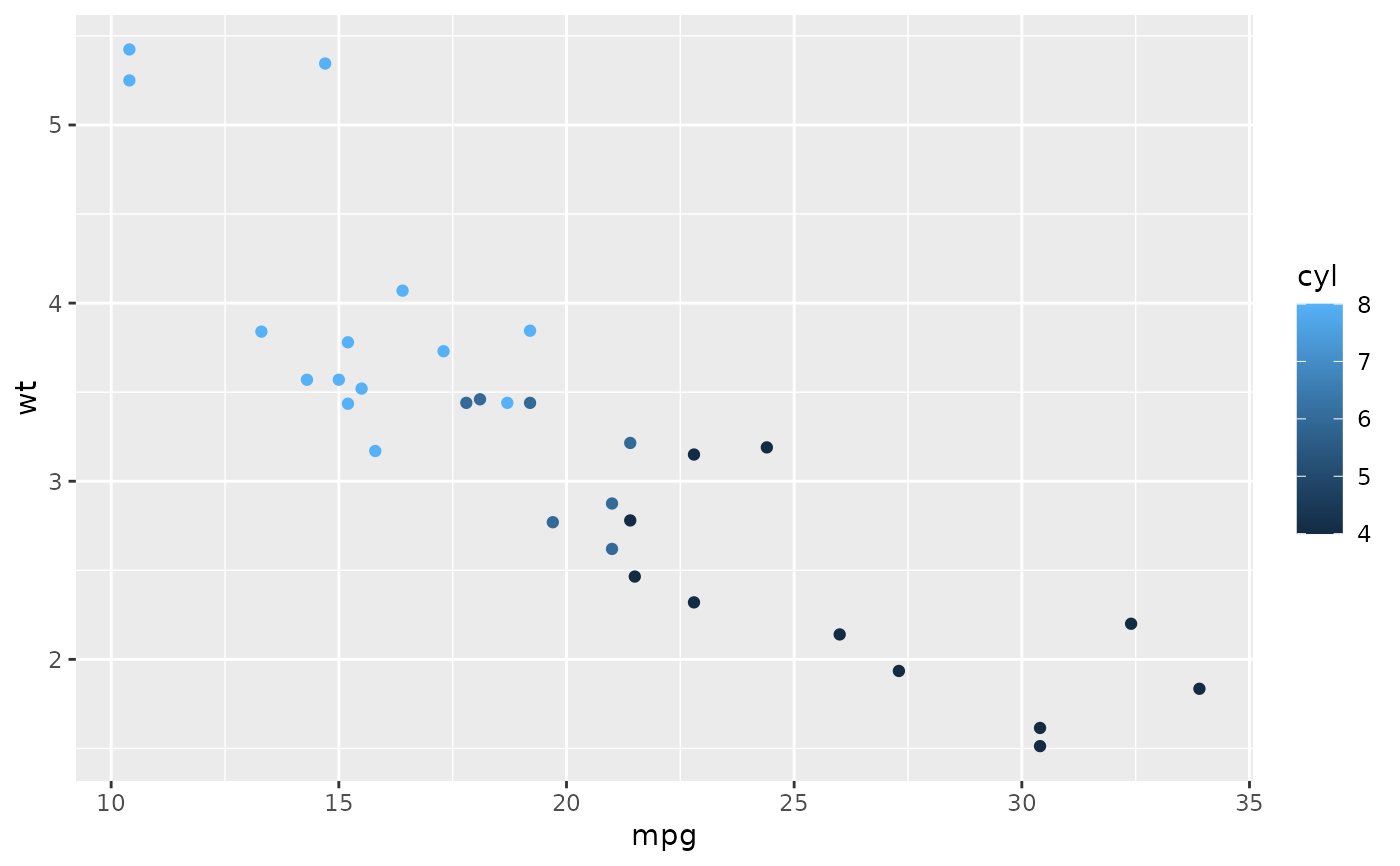Good labels are critical for making your plots accessible to a wider
audience. Always ensure the axis and legend labels display the full
variable name. Use the plot title and subtitle to explain the
main findings. It's common to use the caption to provide information
about the data source. tag can be used for adding identification tags
to differentiate between multiple plots.
:
xlab(), ylab() and ggtitle() are
superseded. It is recommended to use the labs(x, y, title, subtitle)
arguments instead.
get_labs() retrieves completed labels from a plot.
Arguments
- ...
New name-value pairs. The name should be an aesthetic. The values can be one of the following:
A string or expression to set a label verbatim.
A function to use as formatter for the default label.
NULLto remove a label.A
waiver()to use the default label.
- title
The text for the title.
- subtitle
The text for the subtitle for the plot which will be displayed below the title.
- caption
The text for the caption which will be displayed in the bottom-right of the plot by default.
- tag
The text for the tag label which will be displayed at the top-left of the plot by default.
- dictionary
A named character vector to serve as dictionary. Automatically derived labels, such as those based on variables will be matched with
names(dictionary)and replaced by the matching entry indictionary.- alt, alt_insight
Text used for the generation of alt-text for the plot. See get_alt_text for examples.
altcan also be a function that takes the plot as input and returns text as output.altalso accepts rlang lambda function notation.- label
The title of the respective axis (for
xlab()orylab()) or of the plot (forggtitle()).- plot
A ggplot object
Details
You can also set axis and legend labels in the individual scales (using
the first argument, the name). If you're changing other scale options, this
is recommended.
If a plot already has a title, subtitle, caption, etc., and you want to
remove it, you can do so by setting the respective argument to NULL. For
example, if plot p has a subtitle, then p + labs(subtitle = NULL) will
remove the subtitle from the plot.
See also
The plot and axis titles section of the online ggplot2 book.
Examples
p <- ggplot(mtcars, aes(mpg, wt, colour = cyl)) + geom_point()
p + labs(colour = "Cylinders")
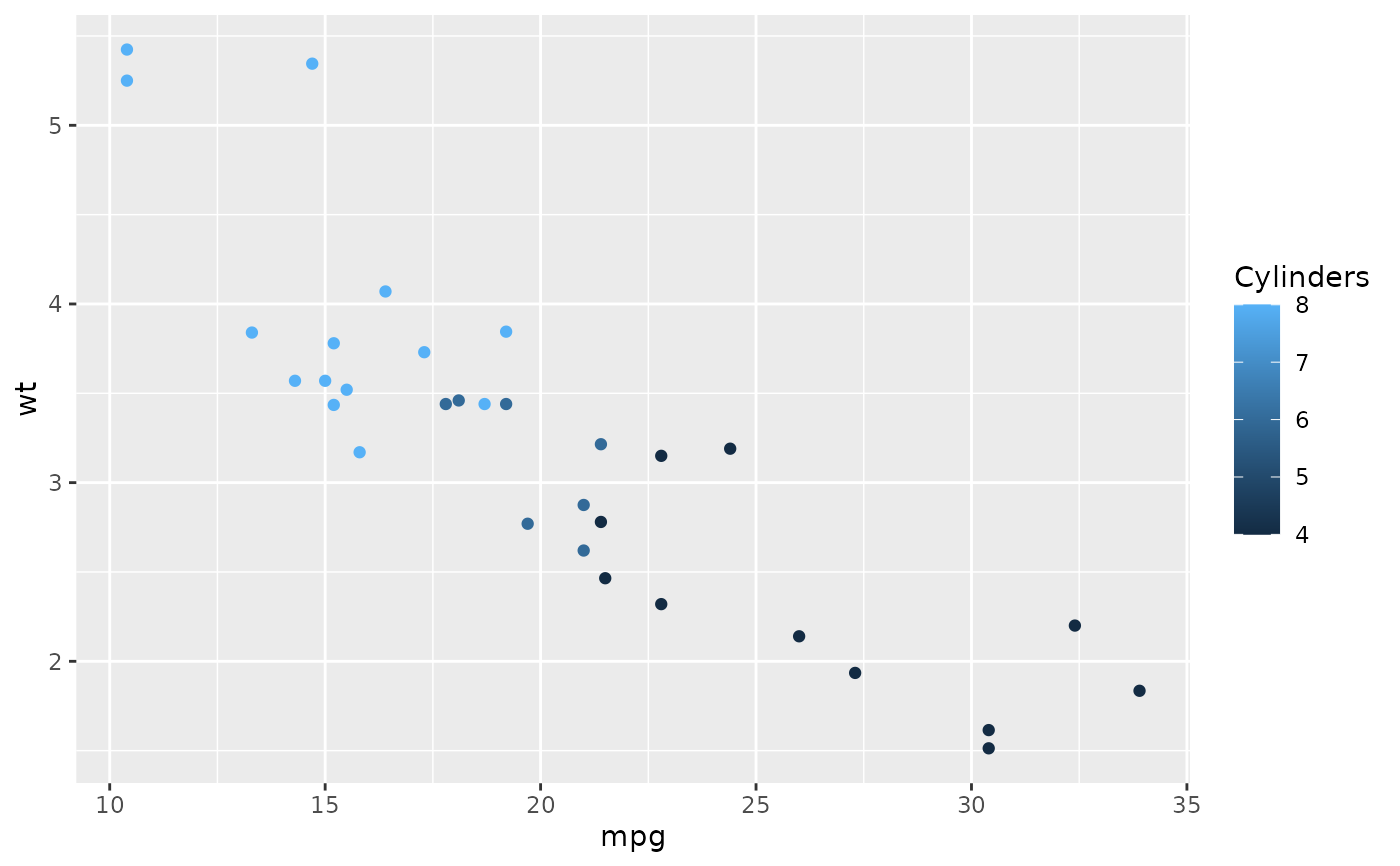 p + labs(x = "New x label")
p + labs(x = "New x label")
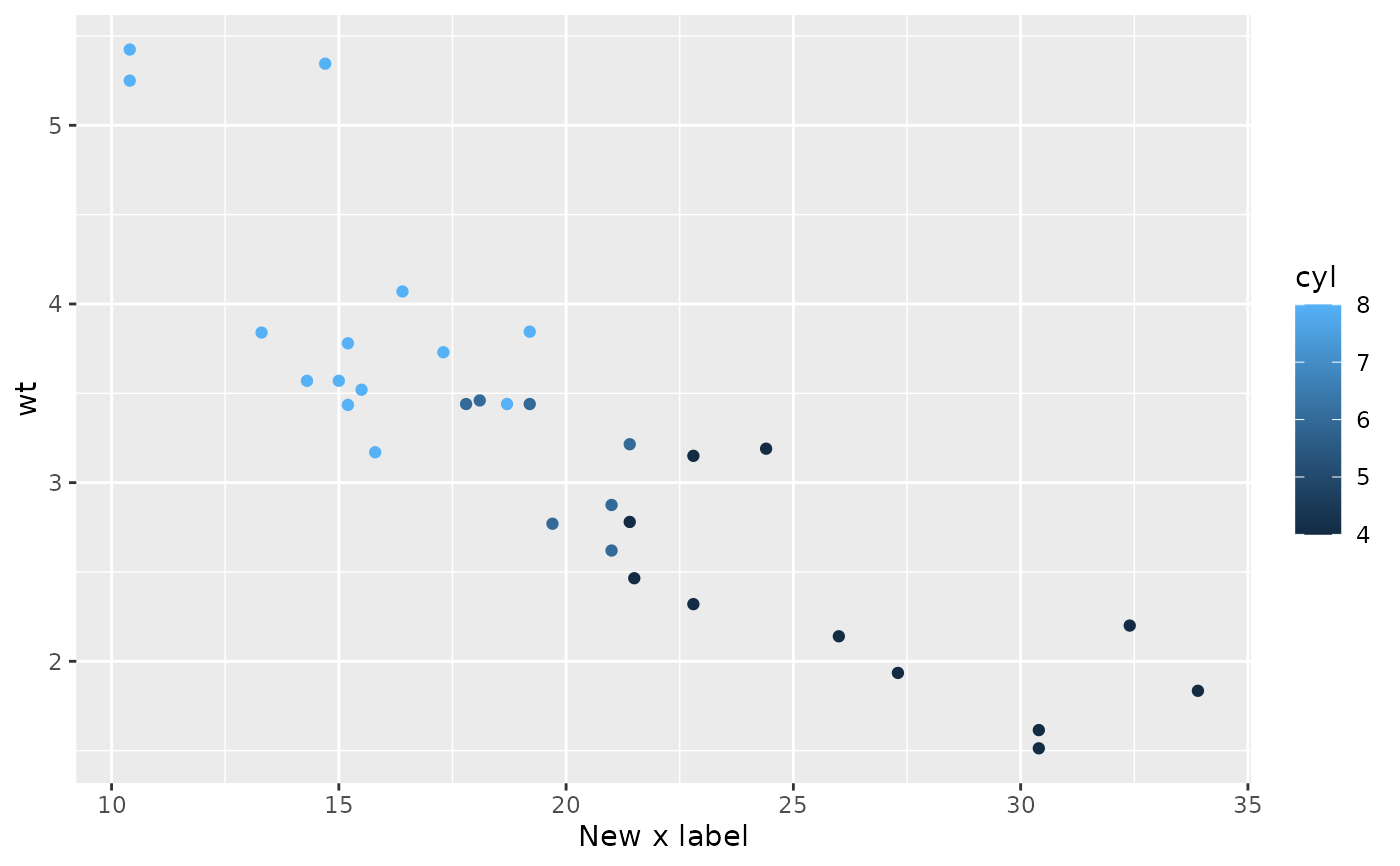 # Set labels by variable name instead of aesthetic
p + labs(dictionary = c(
disp = "Displacment", # Not in use
cyl = "Number of cylinders",
mpg = "Miles per gallon",
wt = "Weight (1000 lbs)"
))
# Set labels by variable name instead of aesthetic
p + labs(dictionary = c(
disp = "Displacment", # Not in use
cyl = "Number of cylinders",
mpg = "Miles per gallon",
wt = "Weight (1000 lbs)"
))
 # The plot title appears at the top-left, with the subtitle
# display in smaller text underneath it
p + labs(title = "New plot title")
# The plot title appears at the top-left, with the subtitle
# display in smaller text underneath it
p + labs(title = "New plot title")
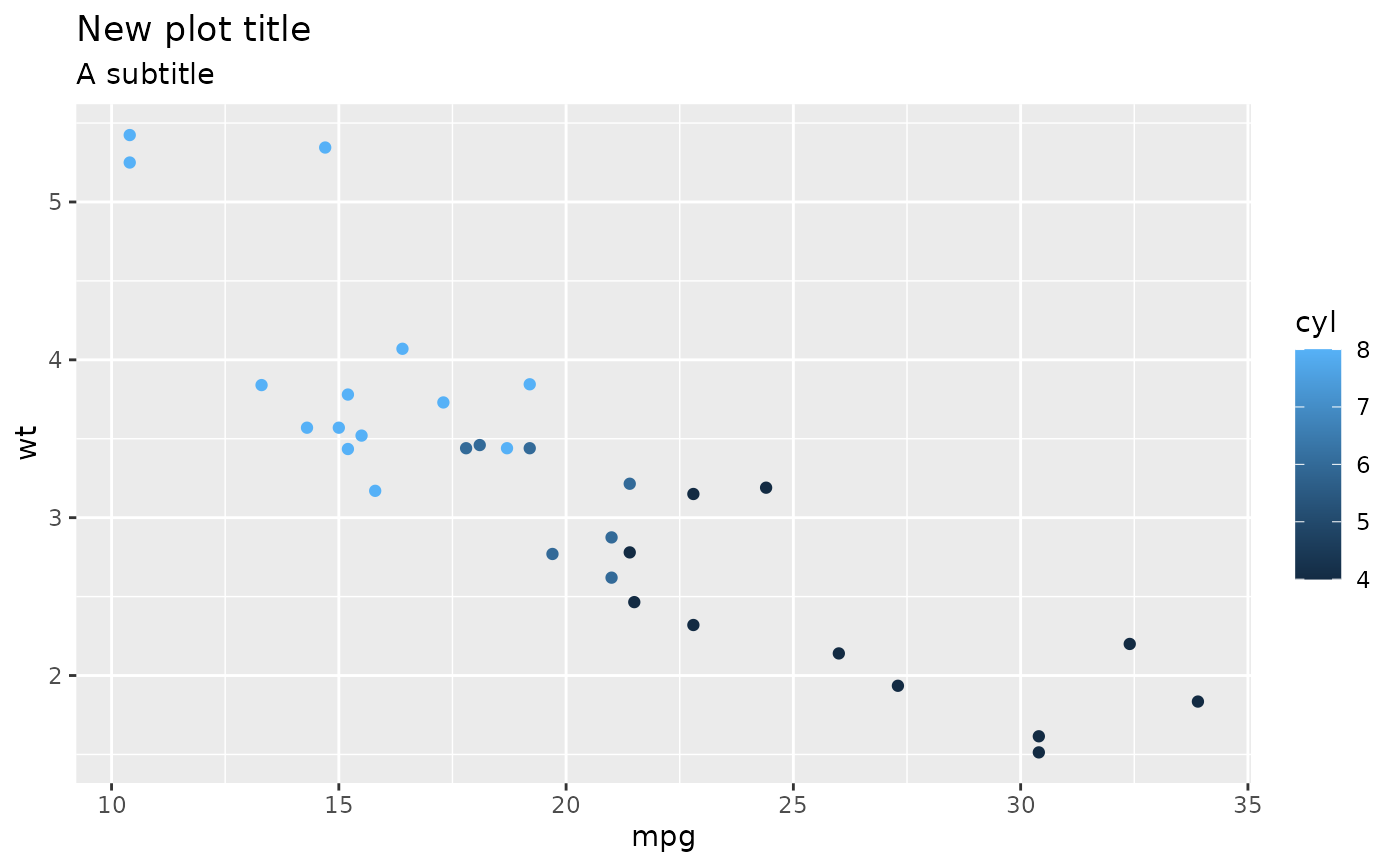 p + labs(title = "New plot title", subtitle = "A subtitle")
p + labs(title = "New plot title", subtitle = "A subtitle")
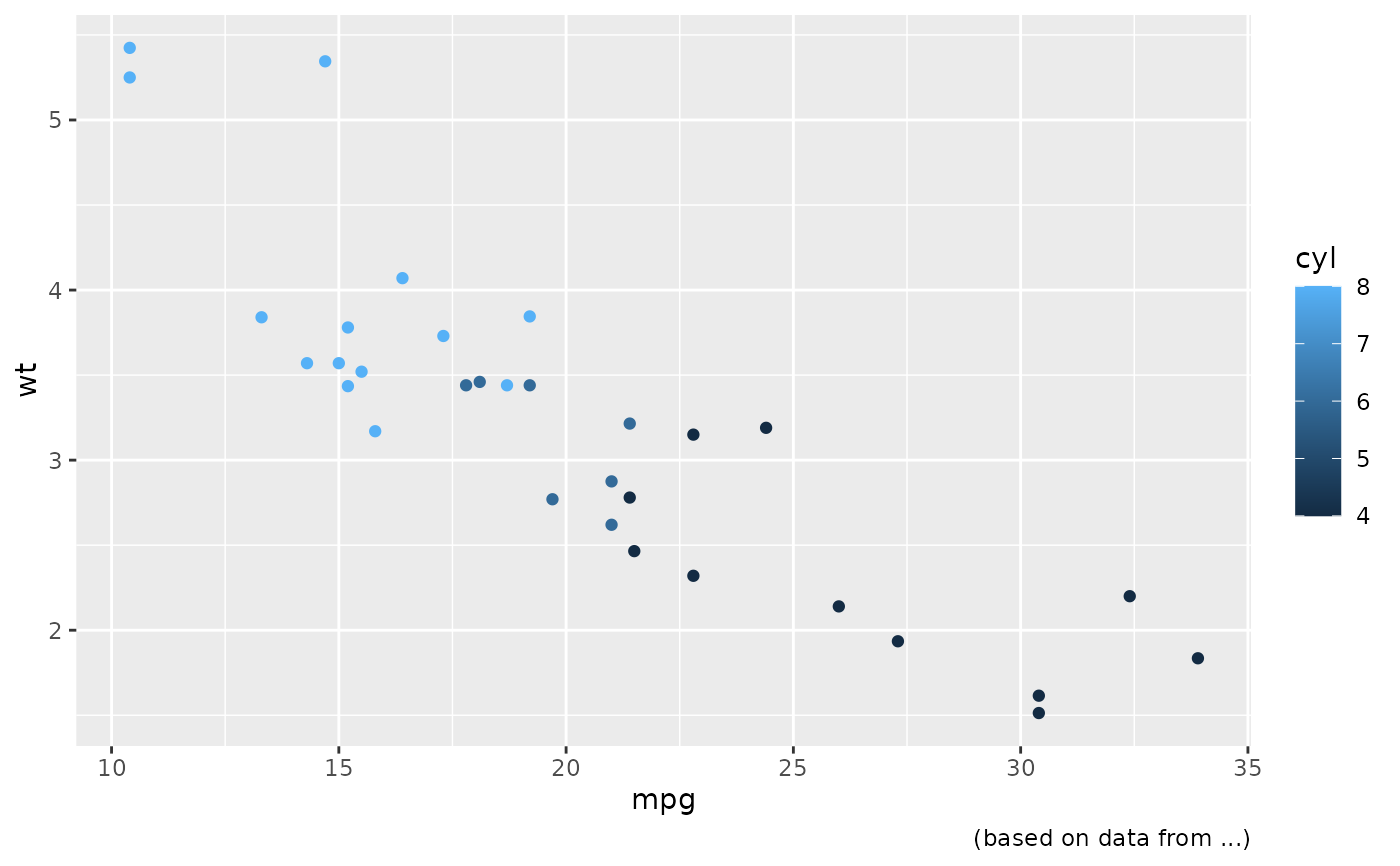 # The caption appears in the bottom-right, and is often used for
# sources, notes or copyright
p + labs(caption = "(based on data from ...)")
# The caption appears in the bottom-right, and is often used for
# sources, notes or copyright
p + labs(caption = "(based on data from ...)")
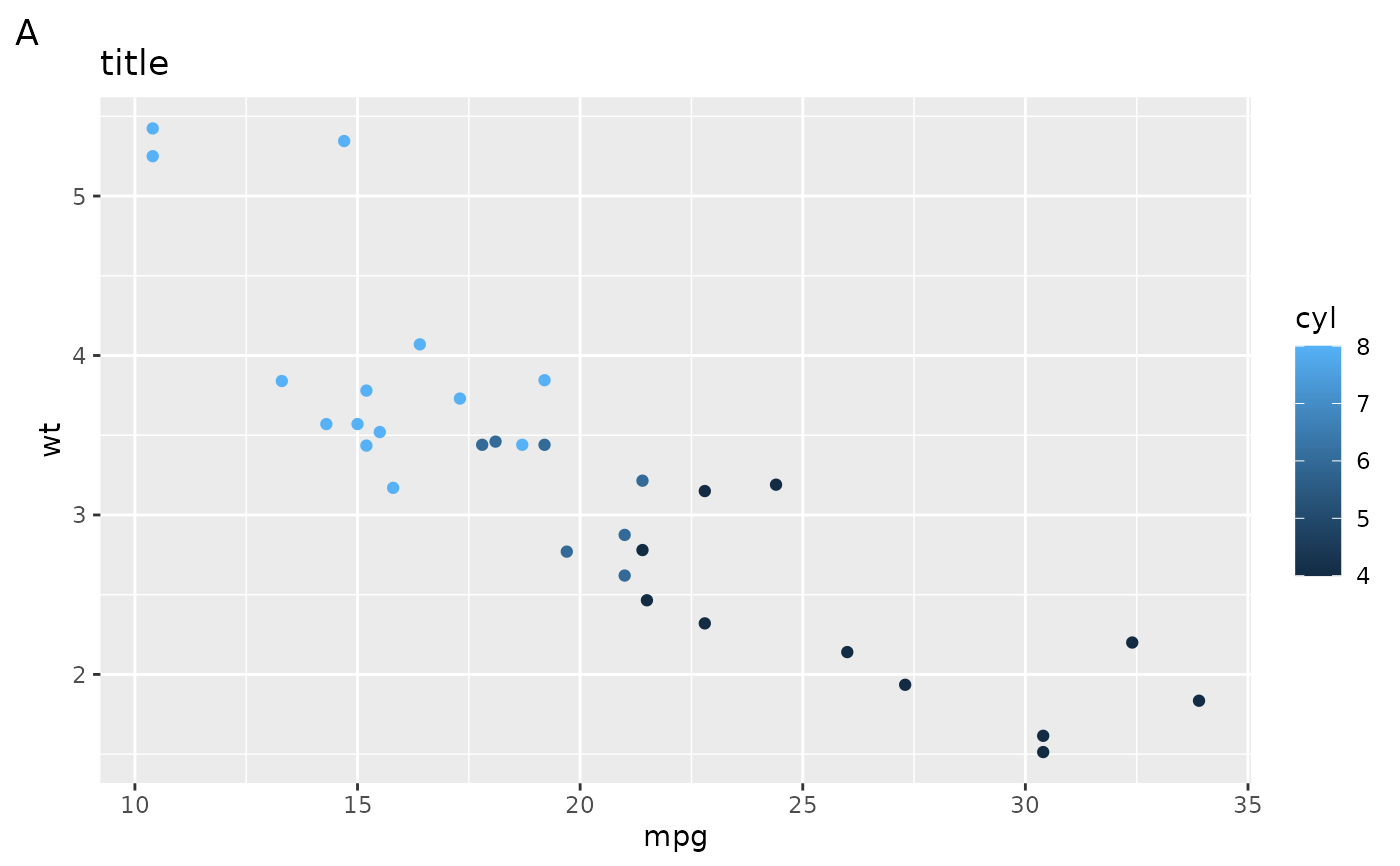 # The plot tag appears at the top-left, and is typically used
# for labelling a subplot with a letter.
p + labs(title = "title", tag = "A")
# The plot tag appears at the top-left, and is typically used
# for labelling a subplot with a letter.
p + labs(title = "title", tag = "A")
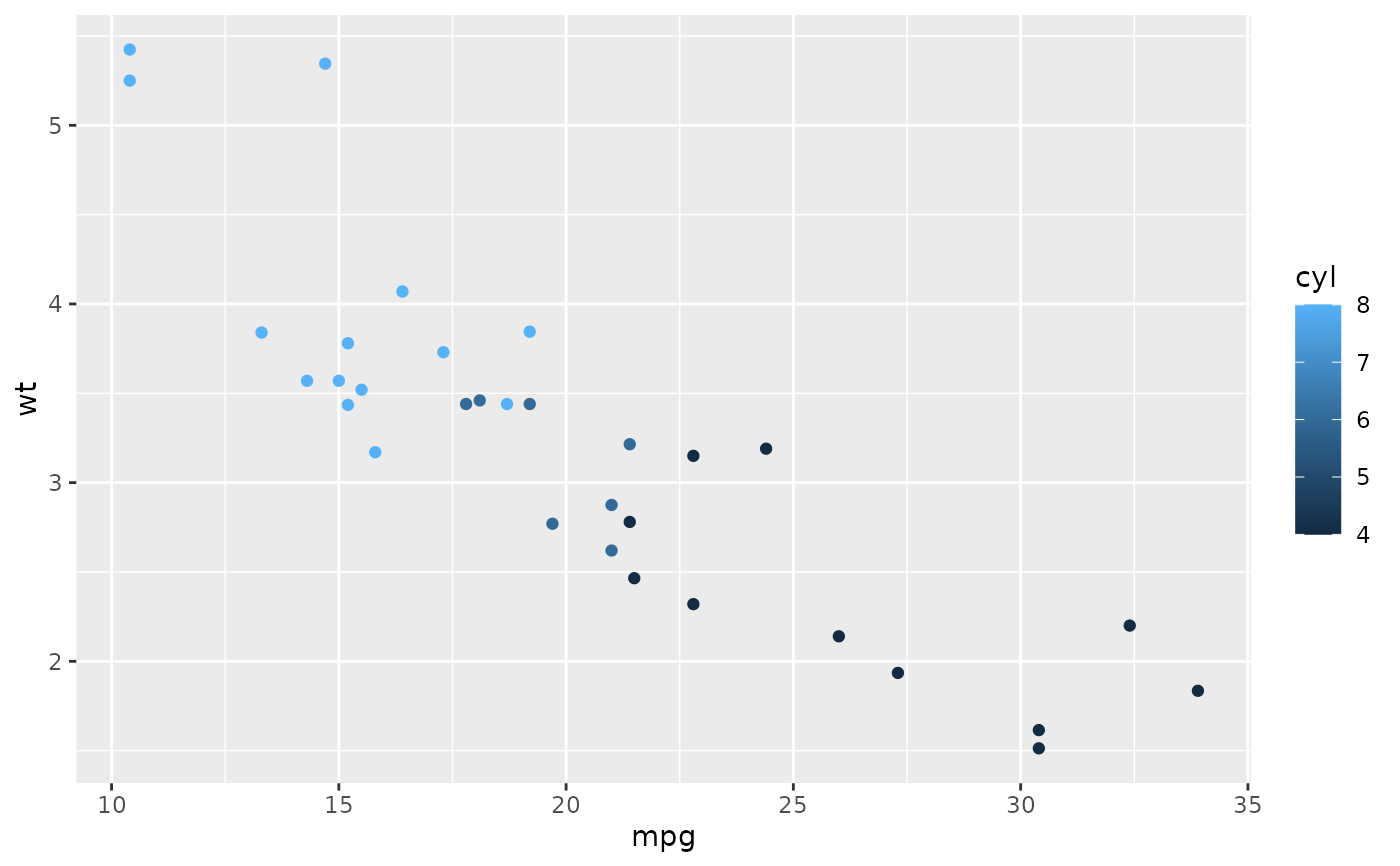 # If you want to remove a label, set it to NULL.
p +
labs(title = "title") +
labs(title = NULL)
# If you want to remove a label, set it to NULL.
p +
labs(title = "title") +
labs(title = NULL)
